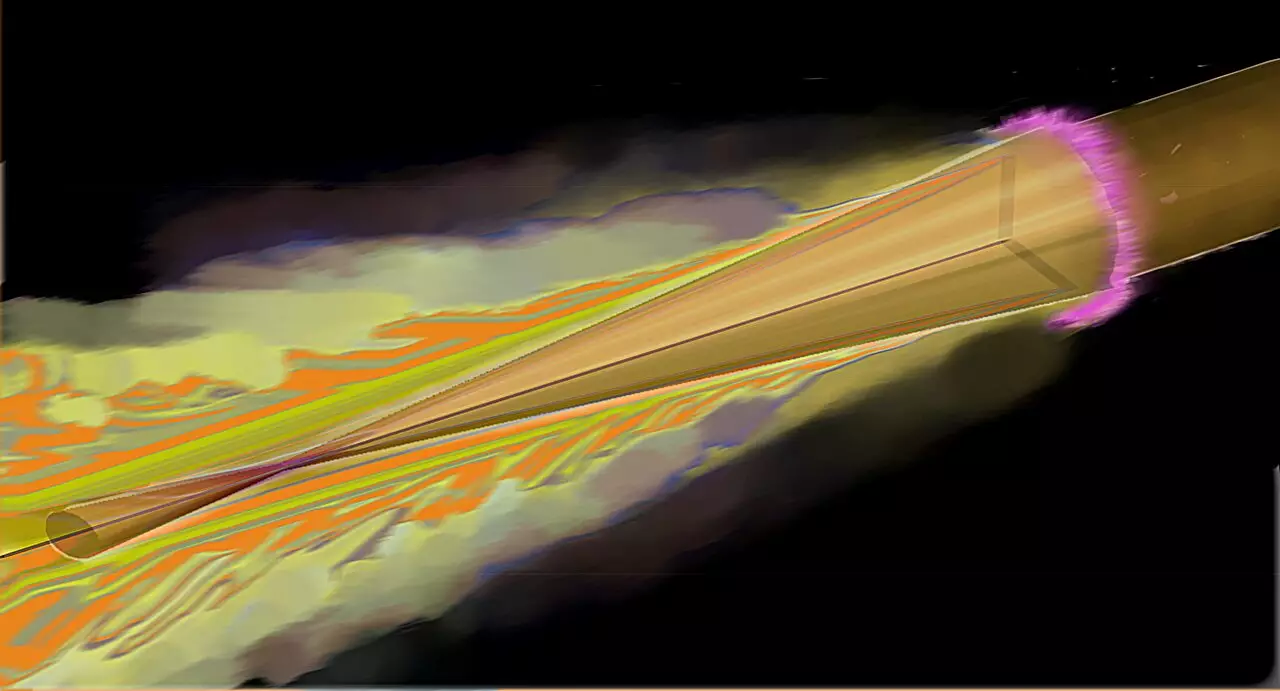The study of extreme conditions, akin to those found at the core of stars and planets, has long been the realm of high-energy physics. Under these cosmic settings, matter behaves in extraordinary ways, with pressures soaring to millions of bars and temperatures reaching several million degrees Celsius. Historically, scientists relied on the world’s most potent laser systems to replicate these celestial conditions, necessitating large facilities like the National Ignition Facility in California. However, advancements in technology may soon revolutionize this field of research, as a team from Helmholtz-Zentrum Dresden-Rossendorf (HZDR) and the European XFEL have demonstrated that it is possible to achieve these extremes using much smaller, more accessible laser setups.
Central to this groundbreaking research was the utilization of an ultra-thin copper wire, measuring merely 25 micrometers in thickness. The process initiated with the delivery of a powerful laser pulse directed at this wire. Rather than relying on larger surfaces, researchers adopted a more efficient and compact strategy. The intense energy from the high-energy laser not only heated the wire’s surface almost instantaneously but also produced shock waves that traversed through the material. These shock waves mimicked the high-pressure conditions analogous to those in planetary interiors or star shells, thereby offering a unique vantage point for further study.
The collaborative effort harnessed the significant capabilities of the High Energy Density (HED-HIBEF) experimental station, which is part of the larger HIBEF consortium. By employing laser pulses that are extraordinarily brief—duration of just 30 femtoseconds—scientists achieved an energy output that reaches a staggering 100 terawatts. This innovative combination of compact, high-energy lasers with the ultra-strong X-ray beams from the European XFEL enabled the observation of unprecedented phenomena within the wire.
The research team, led by Dr. Alejandro Laso Garcia, emphasized the significance of their method, noting it allows for detailed observation of interactions that unfold in mere nanoseconds. In particular, this was made possible by systematically varying the timing between laser impacts and X-ray observations, which produced what they referred to as an “X-ray film” of the event. This process revealed a cascade of reactions triggered by the initial laser pulse.
Upon the laser’s impact, a shock wave formed and rapidly traveled through the wire as if it were setting off a detonation. Interestingly, the high-energy electrons generated during these interactions raced along the surface of the wire, further heating it and prompting additional shock waves from all directions converging at the core. This convergence momentarily created extraordinarily high pressures and temperatures, demonstrating a density in copper that was approximately eight to nine times greater than its normal state.
Remarkably, the study indicated that the pressures attained approached a staggering 800 megabars—akin to 800 million times the atmospheric pressure at sea level. Furthermore, temperatures rose to approximately 100,000 degrees Celsius, conditions that mirror the solar corona of white dwarf stars. This strain of research opens new pathways not only for understanding planetary science and astrophysics but also for examining the characteristics of exotic celestial bodies, including gas giants like Jupiter and newly discovered exoplanets.
Looking ahead, the research team plans to explore other materials, such as iron and plastic—elements that are integral to diverse astrophysical environments. The potential applications are vast, setting the stage for deeper insights into stellar compositions and environments.
Moreover, the implications of this research extend to the field of fusion energy, which promises to harness the same processes powering stars for sustainable energy on Earth. The ongoing global pursuit of viable fusion reactors includes projects aimed at optimizing energy output through laser-induced reactions with fuel capsules. By utilizing the innovative methods outlined in this study, scientists anticipate gaining a more nuanced understanding of the interactions within these fusion capsules when exposed to high-energy lasers.
Ulf Zastrau from the European XFEL underscores the significance of this work, emphasizing how it illustrates the potential to achieve incredibly high densities and temperatures across various materials, vital for progressing fusion research. As experimental methodologies advance, the bridging of astrophysics and energy production technologies stands poised on the horizon, with far-reaching implications for future energy solutions.
This new approach represents not just a flash of scientific ingenuity but a monumental step toward unlocking the mysteries of the universe. By capturing stellar conditions in the lab, researchers are rewriting the boundaries of material science and energy production, furthering our understanding of both the cosmos and potential future energy sources.


Leave a Reply